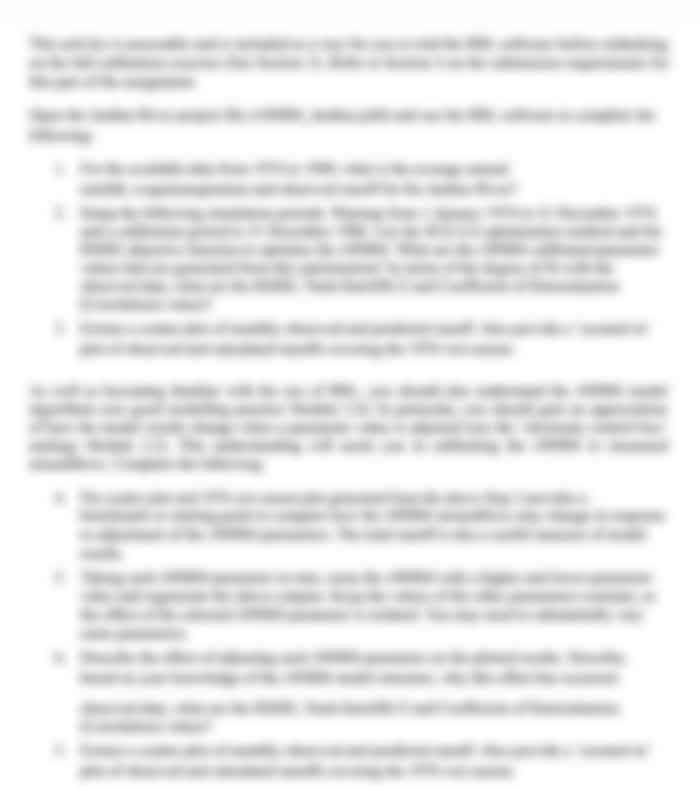ACCT90002 Financial Statement Analysis Assessment
- Subject Code :
ACCT90002
- University :
The University of Melbourne Exam Question Bank is not sponsored or endorsed by this college or university.
- Country :
Australia
QUESTION 1 (34 marks):
- James Broker, an analyst with an established brokerage organization, comments: The critical number I look at for any company is operating cash flow. If cash flows are less than earnings, I consider a company to be a poor performer and a poor investment prospect. Do you agree with him? Explain.
(8 marks) - Consider the following scenario and answer the question posed: In early 2018, Landslide Ltd. announced that it would have to restate its financial statements as a result of sending as much as $4.55 billion worth of products into clients warehouses in 2016 despite no orders having been received. The companys cost of sales percentage for 2016 was 25 per cent. The companys marginal tax rate for 2016 was 30 per cent.
What adjustments would you, as a financial analyst, undertake to amend Landslide Ltd.s balance sheet and income statement for December 31, 2016? Also indicate the effects on assets, liabilities, and shareholders equity. Note: ignore possible impacts on bad debt allowance. Ensure you clearly specify any assumptions underlying your proposed adjustments. (8 marks) - Bolton Ltd. recently purchased an internet site selling books to the academic market. 75% of the revenues of this division come from direct sales of books. Fulfilment costs such as shipping, handling and warehouse expenses, which are a significant cost of doing business, are charged as marketing expenses as they are incurred. In the past two years a further 15% of revenues from this division have come from selling airline tickets online on behalf of several major airlines.
When Bolton Ltd. sells a $400 airline ticket the company records all $400 as revenue and deducts the cost of the ticket in cost of goods sold given they temporarily hold the plane seat in inventory and therefore take on some inventory risk. Bolton Ltd. also swap advertising space on other internet companies websites. They record the value of their benefit from this bartering transaction as if it was a sale and record an expense for the value of the advertising space they provide to the other internet company. This contributes 10% of sales revenue every year.
Critically comment on the accounting for the transactions detailed above. Please indicate:- whether you agree or disagree with the accounting, and
- why you agree (or disagree)
- Explain why terminal values (TVs) in abnormal earnings valuation models are in general significantly less than those for discounted cash flow valuation models.
(6 marks)
QUESTION 2 (24 marks):
- Which of the following types of businesses do you expect to show very little degree of seasonality in sub-period earnings? Explain why earnings might be constant throughout the year for those selected?
(8 marks)- a car mechanic
- a juice manufacturer
- a university
- a property valuer
- a dentist
- Which of the following types of businesses do you expect to show a high degree of seasonality in quarterly earnings? Explain why.
(8 marks)- a supermarket
- a pharmaceutical company
- a software company
- a car manufacturer
- a clothing retailer
- How would the following events (reported this year) affect your forecasts of a firms future net income?
(8 marks)- an asset write-down
- a merger or acquisition
- the sale of a major division
- the initiation of dividend payments 3
QUESTIONS 3 AND 4:
Vodafone Group is a mobile telecommunications service provider that operates a number of networks worldwide. The company invests heavily in mobile networks and has been involved in a large number of network acquisitions since 2010. The group also operates an extensive 14,000 store network. In 2012, Vodafone Group was ranked as the number nine brand globally with an attributed worth of US$30 billion and the most valuable telecoms brand in the world.Vodafone Group describe their business as follows:
We buy licenses that give us rights to spectrum bands and we build networks over which we provide calls, SMS and mobile internet services to customers. Customers pay for the services and we use the cash flow generated to reinvest in the business and provide a good return to our shareholders. Our reinvestment in the business allows us to make continuous improvements to our network, strengthen our brand, and develop our stores and websites to attract new customers and retain existing ones.
Vodafone Group generate their service revenue through the supply of calls, text messaging, data, and other services over their networks. Consumers pay for these services either via contracts (typically up to two years in length) or through buying their airtime in advance (prepaid or pay as you go). Exhibits 1 to 6 should be used when answering Questions 3 and 4 below, both of which relate to the Vodafone Group information contained in these Exhibits.
QUESTION 3 (12 marks):
Use information provided in Exhibit 2 to outline three relevant questions you would ask the CFO of Vodafone Group regarding Vodafones future recurring profitability. Clearly and briefly indicate why you would ask each question you propose.
(12 marks)
QUESTION 4 (30 marks):
- One of the key assumptions underpinning the use of the abnormal earnings (residual income) valuation model is that the clean-surplus relation holds. Does Vodafone Groups accounting violate the clean-surplus relation? If it does, indicate the total amount by which clean surplus is violated for the year ending on March 31, 2012.
(3 marks) - Prepare a condensed balance sheet for Vodafone Group as at March 31, 2012.
Use the following assumptions:- The only interest bearing non-current liabilities are Long-term borrowings.
- Other investments included under Current assets are marketable securities.
- Using the Abnormal Earnings Valuation model, calculate the value per equity share for Vodafone Group as at March 31, 2012. Keep three decimal places in your answer. Use:
- A forecast horizon of three years (2013, 2014, 2015).
- The forecasts and assumptions provided in Exhibit 1.
Note: It is optional to use a continuity correction in your calculations.
(21 marks)
Assumptions for QUESTIONS 3&4:
- Total shares outstanding as at 31 March, 2012: 56,815 million
- Effective taxation rate: 27%
- Net operating asset (NOA) turnover ratio (using beginning-of-the-year balance sheet data) for 2014 and 2015 is equal to the expected NOA turnover ratio of 2013
- The ratio of net debt to shareholders equity at the end of each year in the forecast horizon (2013 to 2015) is equal to 0.9
- Risk-free rate: 2.5%
- Equity beta: 0.62
- Expected rate of return on the market portfolio: 7.5%
- Expected growth in abnormal earnings after 2015: 4.0%
Also given:
- Net interest expense after tax = (Interest expense Interest income) * (1 Tax rate)
- Net operating profit after taxes = Net income + Net interest expense after tax
- Operating working capital = (CA Cash and marketable securities) (CL Short term debt)
- Net long-term (non-current) assets = Total long term assets Non-interest bearing long term liabilities (e.g., tax liabilities, P-E benefit obligations, provisions, etc.)
- Net debt = Total interest bearing liabilities Cash and marketable securities
- Net (operating) assets = Operating working capital + Net long-term (non-current) assets
- Net capital = Net debt + Shareholders equity
EXHIBIT 1: VODAFONE GROUP VALUATION FORECASTS AND ASSUMPTIONS

EXHIBIT 2: VODAFONE GROUP CONSOLIDATED INCOME STATEMENT AND STATEMENT OF COMPREHENSIVE INCOME

EXHIBIT 3: VODAFONE GROUP CONSOLIDATED BALANCE SHEET

EXHIBIT 4: VODAFONE GROUP CONSOLIDATED STATEMENT OF CHANGES IN EQUITY


EXHIBIT 5: SELECTED ACCOUNTING POLICIES OF VODAFONE GROUP
1. INTANGIBLE ASSETS WITH FINITE LIVES:
Intangible assets with finite lives are stated at acquisition or development cost, less accumulated amortisation. Changes in the expected useful life or the expected pattern of consumption of future economic benefits embodied in the asset is accounted for by changing the amortisation period or method, as appropriate, and are treated as changes in accounting estimates. The amortisation expense on intangible assets with finite lives is recognised in profit or loss in the expense category consistent with the function of the intangible asset.
Computer software:
Computer software comprises computer software purchased from third parties as well as the cost of internally developed software. Computer software licences are capitalised on the basis of the costs incurred to acquire and bring into use the specific software. Costs that are directly associated with the production of identifiable and unique software products controlled by the Group, and are probable of producing future economic benefits are recognised as intangible assets. Direct costs include software development employee costs and directly attributable overheads.
Other intangible assets:
Other intangible assets, including brands and customer bases, are recorded at cost or fair value at the date of acquisition. Amortisation is charged to the income statement, over the estimated useful lives of intangible assets from the date they are available for use, on a straight-line basis, with the exception of customer relationships. The amortisation basis adopted for each class of intangible asset on most occasions reflects the Groups consumption of the economic benefit from that asset.
Estimated useful lives of finite lived intangible assets are as follows:
Computer software: 12 15 years
Brands: 1 20 years
Customer bases: 2 7 years
2. REVENUE:
Revenue is recognised to the extent the Group has delivered goods or rendered services under an agreement, the amount of revenue can be measured reliably and it is probable that the economic benefits associated with the transaction will flow to the Group. Revenue is measured at the fair value of the consideration received, exclusive of sales taxes and discounts. The Group principally obtains revenue from providing the following telecommunication services: access charges, airtime usage, messaging, interconnect fees, data services and information provision, connection fees and equipment sales. Products and services may be sold separately or in bundled packages.
In revenue arrangements including more than one deliverable, the arrangements are divided into separate units of accounting. Deliverables are considered separate units of accounting if the following two conditions are met: (1) the deliverable has value to the customer on a stand-alone basis and (2) there is evidence of the fair value of the item. The arrangement consideration (the amount to be received) is allocated to each separate unit of accounting based on its relative fair value.
3. DEFERRED TAXATION:
The carrying amount of deferred tax assets is reviewed at each reporting period date and adjusted to reflect changes in probability that sufficient taxable profits will be available to allow all or part of the asset to be recovered. Deferred tax is calculated at the tax rates that are expected to apply in the period when the liability is settled or the asset realised, based on tax rates that have been enacted or substantively enacted by the reporting period date.
EXHIBIT 6: NOTE TO THE FINANCIAL STATEMENTS: POST EMPLOYMENT BENEFITS

Are you struggling to keep up with the demands of your academic journey? Don't worry, we've got your back! Exam Question Bank is your trusted partner in achieving academic excellence for all kind of technical and non-technical subjects.
Our comprehensive range of academic services is designed to cater to students at every level. Whether you're a high school student, a college undergraduate, or pursuing advanced studies, we have the expertise and resources to support you.
To connect with expert and ask your query click here Exam Question Bank

